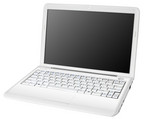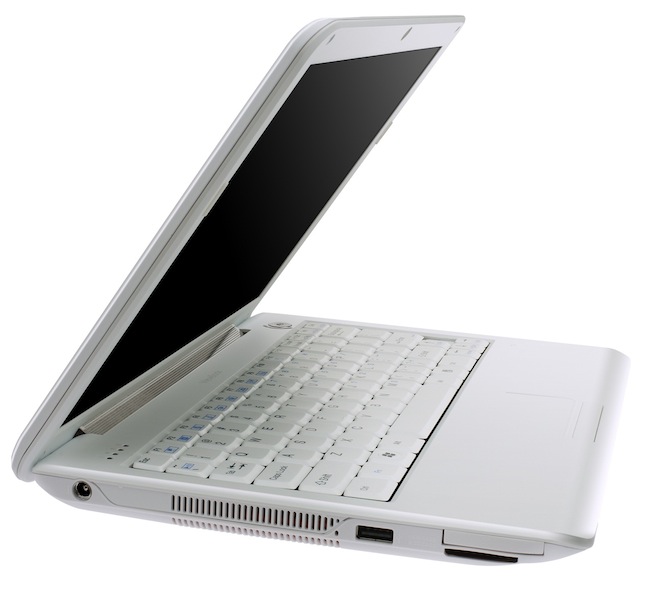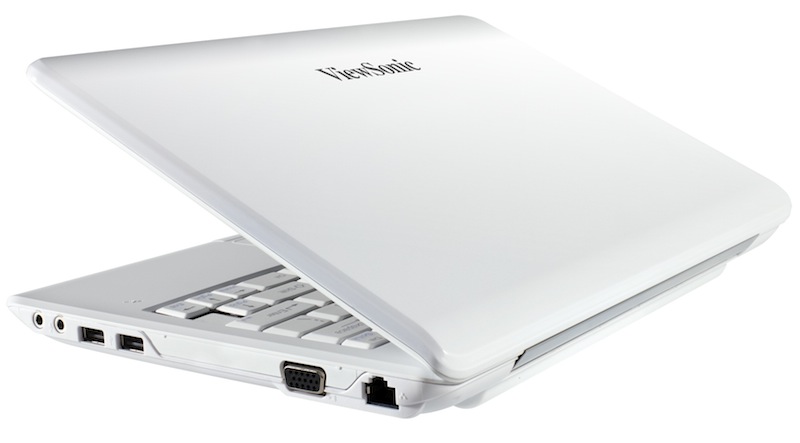Viewsonic ViewBook VNB120
Specifications

Pricecompare
Average of 2 scores (from 2 reviews)
Reviews for the Viewsonic ViewBook VNB120
Source: Good Gear Guide
 Archive.org version
Archive.org versionViewSonic's ViewBook VNB120 is an ultra-low voltage ultraportable notebook with a 12.1in screen and a 1.2GHz Intel Celeron SU2300 dual-core CPU. The 12in ViewBook VNB120 is a much better proposition than a 10in notebook: it's bigger, faster and therefore easier to use. However, we don't like its keyboard, which could use softer keys and full-sized period and comma keys, nor its touchpad design, which blends into the palm rest. The upside down USB ports are also a bit of a pain.
Single Review, online available, Medium, Date: 04/08/2010
Rating: Total score: 60%
Source: Mobile Computer
 Archive.org version
Archive.org versionViewSonic may be a name more readily associated with monitors rather than laptops, but the ViewBook VNB120 is the latest in its line of low-cost ultraportables — it announced its first netbook, the VieBook (no, not a typo), at last year’s CES. The ViewSonic ViewBook VNB120 is a good looking ULV ultraportable that compares favourably with the Samsung X120. The battery life is better, but performance is worse — which is most important is for you to decide.
Single Review, online available, Medium, Date: 01/07/2010
Rating: Total score: 83%
Comment
Intel Graphics Media Accelerator (GMA) 4500M: The graphics core of the Intel GL40 and GS40 chipset features a slower clocked GMA 4500MHD (400 versus 533 MHz). Because of the slower core speed, full Blu-Ray Logo support is not given and the gaming performance is a bit worse.
Only some 3D games with very low demands are playable with these cards.
» Further information can be found in our Comparison of Mobile Graphics Cards and the corresponding Benchmark List.
Intel Celeron Dual-Core: The Intel Celeron Dual-Core familiy consists out of dual core CPUs for cheap laptops. Compared to the Celeron M single core family the biggest advantage (in addition to the second core) is the Enhanced Speedstep function, which enables the notebook to downclock the CPU in Idle mode. Therefore, the current consumption can be much lower. Compared to the Core (2) Duo or Pentium Dual-Core processors, the Celeron Cual-Core features much less L2 Cache which leads to a lower performance per clock.
SU2300: Entry level dual core CPU for small laptops. Offers only a low level performance due to the low clock speed and because of the Celeron brand some power saving features are disabled.» Further information can be found in our Comparison of Mobile Processsors.
12.10":
This range of display format is largely the upper limit for tablets and the lower limit for subnotebooks.
The advantage of subnotebooks is that the entire laptop can be small in size and therefore easily portable. The tiny display has the added advantage of requiring little power, which further improves battery life and thus mobility. The disadvantage is that reading texts is exhausting for the eyes. High resolutions, which one is used to from a standard laptop, are almost not usable.
The same applies to tablets in this size range.
» To find out how fine a display is, see our DPI List.Viewsonic: Founded in 1987 (under the name Keypoint Technology Corporation), Taiwanese-American ViewSonic Corporation (renamed in 1993) is best known for displays/monitors and projectors, visual display devices including liquid crystal displays, interactive whiteboards, and digital whiteboard software.
71.5%: This rating is poor. More than three quarters of the models are rated better. That is rather not a purchase recommendation. Even if verbal ratings in this area do not sound that bad ("sufficient" or "satisfactory"), they are usually euphemisms that disguise a classification as a below-average laptop.
» Further information can be found in our Notebook Purchase Guide.


 Deutsch
Deutsch English
English Español
Español Français
Français Italiano
Italiano Nederlands
Nederlands Polski
Polski Português
Português Русский
Русский Türkçe
Türkçe Svenska
Svenska Chinese
Chinese Magyar
Magyar

